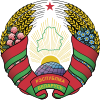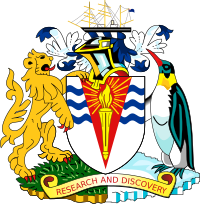
Back Portaal:Vlae en wapens Afrikaans بوابة:علم الشعارات Arabic Portal:Wappen German Portal:Heráldica y vexilología Spanish Portail:Héraldique French פורטל:דגלים וסמלים HE Portál:Heraldika Hungarian Portale:Araldica Italian Портал:Геральдика Kazakh Портал:Хералдика Macedonian
Welcome to the Heraldry and Vexillology Portal!


Vexillology (from the Latin vexillum, a flag or banner) is the scholarly study of flags, including the creation and development of a body of knowledge about flags of all types, their forms and functions, and of scientific theories and principles based on that knowledge. Flags were originally used to assist military coordination on the battlefield, and have evolved into a general tool for signalling and identification, particularly identification of countries.
Heraldry encompasses all of the duties of a herald, including the science and art of designing, displaying, describing and recording coats of arms and badges, as well as the formal ceremonies and laws that regulate the use and inheritance of arms. The origins of heraldry lie in the medieval need to distinguish participants in battles or jousts, whose faces were hidden by steel helmets.
Selected coat of arms

The National Emblem of Belarus (Belarusian: Дзяржаўны герб Рэспублікі Беларусь, Russian: Государственный герб Республики Беларусь), which replaced the historic Pahonia arms in a 1995 referendum, features a ribbon in the colors of the national flag, the map of Belarus, wheat ears and a red star. It is sometimes referred to as the coat of arms of Belarus, which is incorrect due to lack of several heraldic elements. The emblem is an allusion to the one used by the Byelorussian SSR, designed by I.I. Dubasov in 1950. Emblems reminiscent of the times of the Soviet Union are also used by the nations of Tajikistan and Uzbekistan and the region of Transnistria. (more...)
Selected flag

The national flag of the Philippines is a horizontal bicolor with equal bands of blue and red, and with a white equilateral triangle based at the hoist side; in the center of the triangle is a golden yellow sun with eight primary rays, each containing three individual rays; and at each corner of the triangle is a five-pointed golden yellow star. The flag is displayed with the blue field on top in times of peace, and with the red field on top in times of war. The design was conceptualized by Emilio Aguinaldo during his exile in Hong Kong in 1897, and formally adopted in 1898. The flag's colors have varying symbolism, and the shade of blue has changed over time. (more...)
Selected article

Heraldic visitations were tours of inspection undertaken by Kings of Arms in England, Wales and Ireland in order to regulate and register the coats of arms of nobility and gentry and boroughs, and to record pedigrees. They took place from 1530 to 1688, and their records provide important source material for genealogists.The first provincial visitations were carried out under warrant granted by Henry VIII to Thomas Benolt, Clarenceux King of Arms dated 6 April 1530. He was commissioned to travel throughout his province and was given authority to enter all homes and churches. Upon entering these premises, he was authorized to "put down or otherwise deface at his discretion...those arms unlawfully used". (more...)
Selected picture

The Coat of arms of the British Antarctic Territory features a lion and Emperor penguin as supporters, and the RSS Discovery in the crest.
Did you know...
- ...that the ordinances of the city of Pittsburgh, Pennsylvania define a civic flag (pictured), an ensign, a pennant and a streamer?
- ...that British officer of arms Sir William Henry Weldon was the owner of a circus?
- ...that in Scottish heraldry, slogans may appear above a crest or coat of arms, or below a main motto?
- ...that the symbolism of seated monarch on the Flag of Mide is derived from iconography rather than classical heraldry?
- ...that George Hargreaves, Christian Party candidate in the 2008 UK Haltemprice and Howden by-election, said that the dragon symbol on the Welsh flag is "nothing less than the sign of Satan"?
Related portals
Major topics and navigation
|
|
|
Heraldry Web resources
Authorities
- Belgium - The Council of Nobility, Flemish Heraldic Council and Council of Heraldry and Vexillology of the French Community
- Canada - Canadian Heraldic Authority and see also Public Register of Arms, Flags and Badges
- England, Wales, and Northern Ireland - The College of Arms
- Ireland - The Office of the Chief Herald of Ireland
- Netherlands - High Council of Nobility
- Portugal - Instituto da Nobreza Portuguesa
- Scotland - The Court of the Lord Lyon
- South Africa - South African Bureau of Heraldry
- Sweden - National Board of Heraldry, The National Archive
- United States Army - The United States Army Institute of Heraldry
Societies
- Greek Heraldry Society
- The Academy of Heraldic Science Czech republic
- The American College of Heraldry
- The American Heraldry Society
- The Augustan Society
- The Australian Heraldry Society Inc.
- Bulgarian Heraldry and Vexillology Society
- The Center for Research of Orthodox Monarchism
- Cambridge University Heraldic and Genealogical Society
- Chiltern Heraldry Group
- The College of Dracology
- Croatian Heraldic and Vexillologic Association
- The Finnish Heraldic Society
- Fryske Rie foar Heraldyk
- Hellenic Armigers Society
- Guild of Heraldic Artists
- Genealogical Society of Ireland
- Heraldry Research Institute (Japan)
- The Heraldry Society
- The Heraldry Society of Africa
- The Heraldry Society of New Zealand Inc.
- The Heraldry Society of Scotland
- The Heraldry Society of Southern Africa
- The Institute of Heraldic and Genealogical Studies
- The International Association of Amateur Heralds
- Italian Center of Vexillological Studies
- Lancashire Heraldry Group
- Macedonian Heraldry Society
- New England Historic Genealogical Society Committee on Heraldry
- Norwegian Heraldry Society
- Oxford University Heraldry Society
- Polish Heraldry Society
- Polish Nobility Confederation
- Real Academia Matritense de Heráldica y Genealogía - Royal Academy of Heraldry and Genealogy of Madrid
- Romanian Institute for Genealogy and Heraldry
- The Royal Heraldry Society of Canada
- The Russian College of HeraldryThe Russian College of Heraldry
- Serbian Heraldic Society
- Societas Heraldica Scandinavica
- Societas Heraldica Slovenica
- Swedish Heraldic Society
- Ukrainian Heraldry Society
- Royal Association Genealogical and Heraldic Office of Belgium
Vexillology
Software
- Coat of Arms Visual Designer web-based program
- Puncher Heraldry Program
- Blazonry Server - pyBlazon
- DrawShield - creates SVG shield or arms image from blazon
- CoaMaker - web-based tool
- Blazon95 and BLAZONS! 2000, older Windows applications
- Heraldicon
Texts
- Heraldry, historical and popular : with seven hundred illustrations (1863)
- A Complete Guide to Heraldry (1909)
Other
Wikimedia
The following Wikimedia Foundation sister projects provide more on this subject:
-
Commons
Free media repository -
Wikibooks
Free textbooks and manuals -
Wikidata
Free knowledge base -
Wikinews
Free-content news -
Wikiquote
Collection of quotations -
Wikisource
Free-content library -
Wikispecies
Directory of species -
Wikiversity
Free learning tools -
Wikivoyage
Free travel guide -
Wiktionary
Dictionary and thesaurus
© MMXXIII Rich X Search. We shall prevail. All rights reserved. Rich X Search











